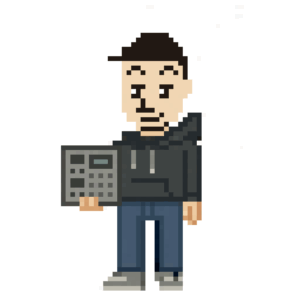Your cart is currently empty!
Beatmaking 101: How to Use a Limiter to Enhance Your Tracks

As a beatmaker, you strive to create the perfect balance between your mix and your master. One essential tool that can help you achieve this balance is the limiter. Limiters are often used to control the overall loudness of a track while preventing distortion and maintaining sonic integrity. In this article, we will explore the basics of limiters, discuss different types of limiters, and provide a step-by-step guide on how to use a limiter effectively in your beatmaking process.
Table of Contents
1. Understanding Limiters: The Basics
A limiter is a type of dynamic processor used in audio production to control the peak levels of an audio signal, ensuring that the output does not exceed a predetermined threshold. Limiters function similarly to compressors, but with a crucial difference: while a compressor gradually reduces the gain of a signal that exceeds a certain threshold, a limiter acts more aggressively, instantly clamping down on any signal that goes beyond the set threshold.
The primary goal of using a limiter is to increase the perceived loudness of a mix while preventing clipping and maintaining the dynamic range. This is particularly important in modern music production, where loudness plays a crucial role in how a track is perceived by listeners.
2. Different Types of Limiters
There are several types of limiters, each with its unique characteristics and applications. Understanding the differences between them will help you choose the most suitable limiter for your specific needs.
a. Peak Limiter: A peak limiter is designed to catch and control sudden, short-lived peaks in an audio signal. It acts quickly and is particularly useful in preventing clipping and distortion caused by transient peaks.
b. RMS Limiter: RMS (Root Mean Square) limiters work by considering the average level of an audio signal. They react more slowly than peak limiters and are often used in combination with peak limiters to control both transient peaks and the overall loudness of a track.
c. Brickwall Limiter: As the name suggests, brickwall limiters act as an impenetrable barrier for audio levels. They prevent any part of the signal from exceeding the set threshold, making them ideal for use in mastering and finalizing a mix.
d. Multiband Limiter: Multiband limiters are designed to process multiple frequency bands independently. This allows for more precise control over the dynamics of a mix, making them suitable for complex audio material or situations where specific frequency ranges need to be controlled.
3. Using a Limiter in Your Beatmaking Process
Now that we have a basic understanding of limiters and their types let’s dive into the process of using a limiter in beatmaking effectively.
Step 1: Choose the Right Limiter
The first step is to select the appropriate limiter for your project. This decision depends on the specific requirements of your mix and the type of music you are working on. For instance, a brickwall limiter would be ideal for mastering a mix, while a multiband limiter might be more suitable for controlling specific frequency ranges.
Step 2: Set the Threshold and Ceiling
The threshold and ceiling are two essential parameters that you need to set when using a limiter.
- Threshold: The threshold determines the level at which the limiter starts to act on the audio signal. Lowering the threshold will result in more aggressive limiting, while raising it will allow more of the audio signal to pass through unaffected.
- Ceiling: The ceiling is the maximum output level allowed by the limiter. It is essential to set the ceiling slightly below 0 dBFS (decibels relative to full scale) to prevent digital clipping and distortion in your final mix.
Step 3: Adjust Attack and Release Times
Attack and release times are essential parameters that determine how quickly the limiter responds to and recovers from changes in the input signal.
- Attack Time: The attack time determines how fast the limiter clamps down on a signal that exceeds the threshold. A shorter attack time will result in more aggressive limiting, which can be useful for controlling transient peaks. However, setting the attack time too short may cause unwanted distortion or pumping artifacts.
- Release Time: The release time sets how long it takes for the limiter to stop reducing the gain after the signal has dropped below the threshold. A longer release time will result in smoother and more transparent limiting, while a shorter release time may cause the limiter to be more noticeable in the mix.
It is important to find the right balance between attack and release times to ensure that the limiter responds effectively to changes in the input signal without causing unwanted artifacts.
Step 4: Fine-tune Other Limiter Parameters
Some limiters offer additional parameters that can be adjusted to further refine their behavior:
- Look-ahead: Look-ahead allows the limiter to analyze the incoming signal before it reaches the threshold, ensuring more accurate and transparent limiting. This feature is particularly useful when dealing with fast transients that might otherwise cause distortion.
- Knee: The knee parameter determines how the limiter transitions from no gain reduction to full gain reduction as the input signal approaches the threshold. A soft knee will result in a more gradual transition, while a hard knee will produce more aggressive limiting.
- Hold: The hold time determines how long the limiter will maintain a constant gain reduction after the release time has elapsed. Adjusting the hold time can help prevent pumping artifacts and provide more transparent limiting.
Step 5: Monitor the Results
It is crucial to closely monitor the results of your limiting process to ensure that it is achieving the desired effect without introducing unwanted artifacts. Use a combination of metering tools, such as peak and RMS meters, and your ears to evaluate the overall loudness, dynamic range, and sonic quality of your mix.
Step 6: Iterate and Adjust
Limiting is an iterative process, and it may take several attempts to achieve the perfect balance between loudness and dynamics in your mix. Don’t be afraid to experiment with different settings, types of limiters, and even multiple instances of limiters in series or parallel to find the best combination for your specific needs.
Conclusion
Using a limiter effectively is an essential skill for beatmakers and producers alike. Understanding the different types of limiters, knowing how to set the appropriate parameters, and being able to monitor and fine-tune the results will ensure that your tracks have the desired loudness, clarity, and impact. With practice and patience, you’ll be well on your way to creating professional-sounding mixes that stand out in today’s competitive music landscape.
About The Author

Born in 1982 in Japan, he is a Japanese beatmaker and music producer who produces experimental hiphop beats. He is the owner of Genx Records. Because he grew up internationally, he understands English. His hobbies are muscle training, artwork creation, website customization, and web3. He also loves Korea.
Website: genxrecords.xyz
Share This Post:
Leave a Reply